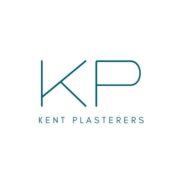Discover how borrowing extra on your mortgage for renovations could transform your property into the dream home you’ve always wanted – without breaking the bank.
Understanding Your Mortgage Borrowing Options
For Kent homeowners looking to enhance their properties, understanding the various mortgage borrowing options is crucial. Recent data shows that 67% of UK homeowners who borrowed additional funds on their mortgage in 2023 did so for home improvements. This growing trend reflects the increasing desire among property owners to invest in their homes rather than move. The current market conditions in Kent, where property values have risen by 8.2% in the past year, make this an particularly attractive option.
Traditional Additional Borrowing
Traditional additional borrowing, often called a ‘further advance’, allows you to borrow more money from your existing mortgage lender. This option typically offers lower interest rates compared to personal loans, with current rates averaging between 4.5% and 6.5% for existing customers. The amount you can borrow usually depends on your home’s equity and your financial circumstances.
Renovation-Specific Mortgage Products
- Home Improvement Mortgages: Specifically designed for renovation projects
- Green Home Mortgages: Offering preferential rates for energy-efficient improvements
- Buy-to-Renovate Mortgages: Tailored for property developers and investors
- Flexible Mortgages: Allowing you to make overpayments and borrow back funds
Home Equity Loans vs HELOCs
Home Equity Loans and Home Equity Lines of Credit (HELOCs) offer different approaches to accessing your home’s equity. Home Equity Loans provide a lump sum with fixed interest rates, currently averaging 5.8% in the UK, while HELOCs offer flexible access to funds with variable rates, typically starting from 6.2%.
Calculating the Financial Impact
Understanding the long-term financial implications of borrowing extra on your mortgage is essential for making an informed decision. The impact varies significantly based on factors such as interest rates, loan term, and the amount borrowed.
Interest Rates and Long-term Costs
- Calculate total interest over the extended term
- Compare current market rates with existing mortgage rates
- Consider early repayment charges and fees
- Factor in potential tax benefits for certain improvements
Monthly Payment Changes
Your monthly payments will likely increase when borrowing additional funds. For example, borrowing an extra £50,000 over 25 years at 5% could increase monthly payments by approximately £290. It’s crucial to ensure these increased payments fit comfortably within your budget.
Impact on Your Homes Equity
While borrowing against your home’s equity increases your debt, strategic renovations can potentially increase your property’s value. Recent studies show that certain home improvements can add up to 20% to your property’s value.
Which Renovations Add the Most Value?
When considering renovations financed through mortgage borrowing, focusing on improvements that add significant value to your property is crucial. Current market research indicates that certain renovations offer better returns on investment than others.
High-Return Home Improvements
- Loft conversions: Adding up to 20% value
- Extensions: Increasing value by 15-20%
- New kitchen: Contributing 5-10% to property value
- Garden landscaping: Adding up to 5% value
Kitchen and Bathroom Renovations
Kitchen and bathroom renovations consistently rank among the most valuable home improvements. A well-executed kitchen renovation can provide a return on investment of up to 75%, while modern bathroom updates typically return 60-80% of their cost in added value.
Energy-Efficient Upgrades
With increasing focus on sustainability, energy-efficient improvements are becoming more valuable. These upgrades can reduce utility bills and increase your home’s appeal to future buyers.
The Application Process
Securing additional mortgage borrowing for renovations requires careful preparation and documentation. Understanding the process can help ensure a smooth application experience.
Required Documentation
- Proof of income and expenditure
- Detailed renovation plans and costings
- Current mortgage statements
- Property valuation reports
- Building permits (if required)
Credit Score Considerations
Your credit score plays a crucial role in securing additional borrowing. Lenders typically look for scores above 700 for the best rates, though some may consider scores as low as 620.
Property Valuation Requirements
Most lenders will require a current property valuation, typically costing between £150-£1,500 depending on your property’s size and location.
Pros and Cons of Mortgage Borrowing for Renovations
Before proceeding with additional mortgage borrowing, it’s essential to weigh the advantages and disadvantages carefully.
Advantages of Using Mortgage Funds
- Lower interest rates compared to personal loans
- Longer repayment terms available
- Potential tax benefits for certain improvements
- Opportunity to increase property value
Potential Drawbacks to Consider
- Extended mortgage term
- Additional monthly costs
- Increased overall interest payments
- Risk of negative equity if property prices fall
Alternative Financing Options
While mortgage borrowing can be attractive, it’s worth considering alternative financing options to ensure you choose the most suitable solution for your circumstances.
Personal Loans
Personal loans offer a way to finance smaller renovation projects without securing against your property, though interest rates are typically higher, currently averaging 7-15% in the UK.
Savings and Investment Options
Using savings or investments might be more cost-effective for some homeowners, eliminating interest charges altogether.
Making Your Final Decision
Consider consulting with financial advisors and mortgage specialists before making your final decision. They can help you understand the full implications of different borrowing options and ensure you choose the most suitable solution for your circumstances.
Contact Kent Plasterers for Your Renovation Project
Ready to start your home transformation? Our experienced team at Kent Plasterers specialises in high-quality plastering services for all types of renovation projects. Contact us today for a free consultation and quote to help bring your vision to life with professional, reliable plastering services that add real value to your home.
FAQ
Which bank is best for a renovation loan?
Lowest Renovation Loans Interest Rates (August 2025)
What is a 203k loan?
What Is an FHA 203(k) Loan? An FHA 203(k) loan is a type of government-insured mortgage that allows the borrower to take out one loan for two purposes: home purchase and home renovation. An FHA 203(k) loan is wrapped around rehabilitation or repairs to a home that will become the mortgagor’s primary residence.
Can I add money to my mortgage for renovations?
If you’re purchasing a new home, you may qualify for a purchase-plus-improvements mortgage, which allows you to include renovation costs as part of your mortgage. As an existing homeowner, refinancing your mortgage or tapping into your home equity may be viable options to secure renovation funds.
What is the maximum renovation loan?
Understanding Your Loan Options Renovation Loans typically cap at S$30,000 and you can borrow up to 6x your monthly income, while Personal Loans can offer a higher ceiling of up to S$200,000 and up to 8x your monthly income for those with annual incomes of S$120,000 or more.
Sources
[1] https://www.bankrate.com/home-equity/home-equity-for-improvement-renovation/
[2] https://www.youtube.com/watch?v=3g2hp9lWSaA
[3] https://crosscountrymortgage.com/mortgage/loans/renovation/renovation-heloc/

